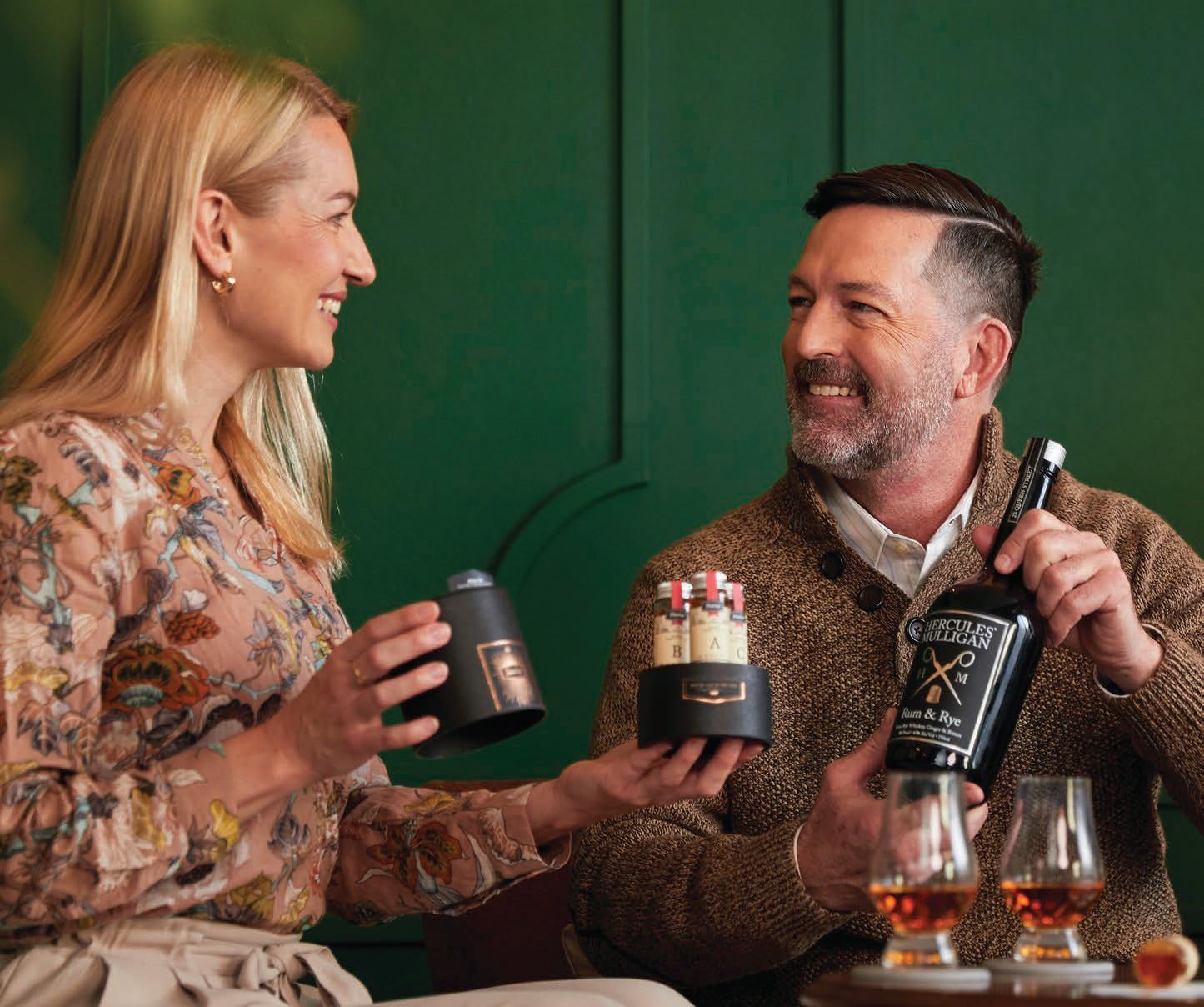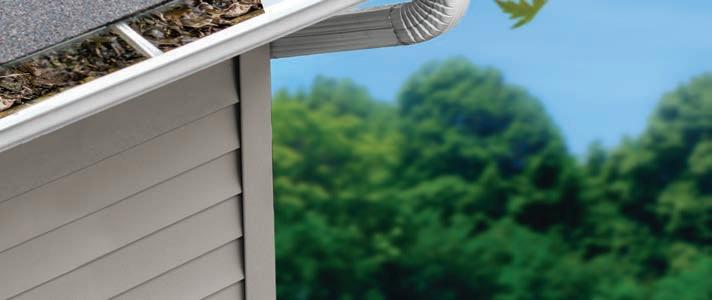
5 minute read
Get Dad into America’s Largest Exclusive Whiskey Club


All-year special treatment, curated top-shelf Spirits, original bottlings, in-depth articles, expert-guided tastings… He’s your VIP, so make him feel like one for Father’s Day and the rest of the year.


FROM PAGE 22
Stackhouse Lawson said the inventory does a decent job of estimating livestock emissions at the scale of the entire U.S. But for individual operations trying to account for the carbon footprint of their own herds, those numbers are too generalized to tell the full story. “ ere’s too much variability between animals, there’s too much variability within region,” she said.
Stackhouse Lawson’s team is only now doing the work of developing more precise numbers. She cited surprising initial data from CSU’s research pens that shows the quantities of methane cows produce can vary wildly from animal to animal, suggesting an entirely new frontier for the research.
“Is there a genetic component?” She wondered. “Would we select animals that have lower methane?” e CSU team is also looking at other variables like feed additives that can cut emissions outright.
John Tauzel, senior director for global agriculture methane with the Environmental Defense Fund, explained successful additives “will change the biome of the cow’s stomach to reduce the amount of methanogens—the organisms that create the methane.” It’s a solution he went on to describe as “really, really complex,” because of the complicated structure of the livestock industry and the biological intricacies of cattle microbiomes. at complex problem remains only partially-solved, in part due to lack of funding for the research.
Tauzel pointed out that only 2% of federal funds that support research and development for climate adaptation and mitigation in agriculture go toward reducing enteric emissions.
“We need more investment in that space if we’re going to meet the reductions in timeframes that we need,” Tauzel said. at investment is starting to come. Just last week, the team at AgNext announced it had received a $1 million Conservation Innovation grant from the US Department of Agriculture. e money will support continued research into emissions on the feedlot. It will also allow the researchers to expand their inquiry into cattle emissions to look at cows grazing in a pasture setting.
Stackhouse Lawson hopes more funding could be part of the next Farm Bill currently being negotiated in congress.
Until more federal dollars start owing, the research being done on cattle emissions is dependent on industry to ll the funding gap.
Industry’s stake in reducing emissions
Five Rivers Cattle Feeding bills itself as the world’s biggest cattle feeding operation. e Northern Colorado-based company runs 13 feedlots across six western states, with the capacity to fatten up to 900,000 head of cattle at any given time. A cow typically spends about six months on one of Five Rivers’ feedlots, during which time it can put on anywhere between 500 and 700 pounds.
“What we’re all about is e ciency,” said Vice President of Environmental A airs and Sustainability Tom McDonald. “[We’re] getting cattle to perform at their best while they’re at the feedlot.”
Part of that commitment to cattle performance includes support for the ongoing work at CSU’s research pens.
“ e whole goal here is to learn what our greenhouse gas footprint is, and then how can we improve it?” McDonald said.
All of the emissions research animals at CSU are on loan from Five Rivers. e company also supplies the animals’ feed and has donated
$600,000 worth of equipment to the cause, including the GreenFeed machines that collect and analyze cow exhalations.
McDonald said his company expects to recoup that sizeable investment and then some in the eventual e ciency gains made possible by the research.
Methane, after all, isn’t just a greenhouse gas. “Methane is energy,” McDonald said. “When energy is lost, that’s a wasted resource.”
CSU researcher Sarah Place said reducing methane emissions from cows could actually mean more beef to go around.
“[Methane] is basically feed calories the animal eats that actually get lost to the atmosphere,” Place explained. at means the less methane a cow exhales as it digests, the more weight it puts on that ultimately becomes beef. In other words, a lower emitting cow is more e cient at converting corn feed to body mass than a higher emitting cow.
McDonald likened the company’s interest in lowering cows’ methane emissions to any other sound business decision.
“When we upgrade equipment at the feed mill, we look for energy e cient equipment. We strive to reduce our energy usage in those areas,” he said. “From a cattle performance standpoint, we utilize the tools available to help the cattle grow faster, gain faster.”
A race against the climate time horizon
But for all the enthusiasm from the agriculture industry, the work at AgNext and a handful of related research facilities around the country is still young. Scientists are working to translate promising treatments from the pristine laboratory setting to actual, scalable applications in the feed lot.
“We’ve got a lot of exciting research that is underway,” Stackhouse Lawson said. “But it’s not ready yet.” at’s a problem, according to Ben Lilliston, director of climate and rural strategies at the Institute for Agriculture and Trade Policy, a climate and agriculture think tank.
“[ e technologies] are not proven yet,” Lilliston said. “We need to have emissions reductions really quickly, like in the next seven years. Speculative technologies are… You

10 know, it’s not to say that they’re not worth exploring, but [I] wouldn’t rely on them as a real climate mitigation strategy.” is KUNC story via e Associated Press’ Storyshare, of which Colorado Community Media is a member.
Apart from the scarcity of feedlotready solutions, Lilliston points to factory farming itself – an industrial system hell-bent on continual growth - as the main culprit.
“Even if you’re able to reduce emissions a small amount by some of these scienti c advances, if you’re going to continue to grow and expand the number of animals that are part of that system, then you’re going to negate those gains,” he said.
He thinks of the emerging technologies as a distraction from the bigger question that we’re not asking: how many beef and dairy cows do we need in this country? After all, a more immediate solution to the livestock methane conundrum is to have fewer cows.
“Reducing the cattle herd is the clearest way to reduce actual emissions,” Lilliston said.
Of course, a smaller cattle herd would mean less meat and dairy on the market, which would impact consumers’ meal choices. It’s a situation John Tauzel doesn’t nd feasible.
“For various reasons, whether that’s social, whether that’s economic, livestock products are going to continue to be part of a signicant portion of the global diet for the foreseeable future,” Tauzel said. at’s why he believes advancing research on livestock methane emissions is critical.
“If people choose to eat a hamburger, we want to make sure that when they eat that hamburger, it has the lowest methane footprint possible,” Tauzel said.
As for Place, she wants to nd solutions that simultaneously work for consumers, cattlemen and the climate.
“At the end of the day, we want to make sure we create practical solutions that can be adopted in the real world,” Place said.
After all, people like their burgers. It just might be easier to alter the microbiome of an animal’s gut than it is to change the cravings of a hungry planet.
Turn To The Colorado Sun For News Across The State
The Colorado Sun is a journalistowned, award-winning news outlet that strives to cover all of Colorado so that our state — our community — can better understand itself.
In this way, The Sun contributes to a more vibrant, informed and whole Colorado.
The Sun, launched in 2018, is committed to fact-based, in-depth and nonpartisan journalism. It covers everything from politics and culture to the outdoor industry and education.
Now, The Colorado Sun co-owns this and other Colorado Community Media newspapers as a partner in the Colorado News Conservancy. The Sun is CCM’s partner for statewide news.
For Colorado Sun stories, opinions and more, and to support The Sun’s misssion as a member or subscriber, visit coloradosun.com.










